Insurance agency websites need great web design. Quite often, your website is the first encounter potential clients have with your brand. If you want to convert prospects into leads or customers, they must feel assured about your trustworthiness and credibility.
Table of Contents
A polished and professional site lays these foundations and provides a user experience that leads to conversions.
How to Design an Insurance Website?
Building a high-quality insurance agency website requires a lot of thought and forward planning. Some of the main points to consider include:
- User experience: You need an uncluttered layout, clear navigation and CTAs, fast loading times, and mobile responsiveness.
- Design: Your site should match the look and feel of your brand and include high-quality images and modern design elements.
- Security: Insurance agency websites, much like finance and healthcare websites, must have high levels of security to protect customer data and process payments.
Working with professional web developers means you stay up to date on security, user experience, and design best practices. Going down this route saves you a lot of time and allows you to build a custom website that reflects your brand.
Some common pitfalls to avoid when building an insurance agency website include:
- Cluttered design that makes it difficult for your prospects to find important information
- Slow loading times that cause traffic to bounce and hurt your overall SERP rankings
- Lack of mobile responsiveness, which alienates some users
- Poor security that can lead to fines or embarrassing data leaks
Establish a Strong First Impression
Long-standing research from Stanford University suggests that three-quarters of users judge a brand’s credibility based on website design. This effect is even more pronounced in industries like insurance that thrive on trust and credibility.
Clean, professional website design communicates reliability and legitimacy while reducing bounce rates and boosting your insurance agency brand. Additionally, well-placed elements can subtly nudge your prospects toward conversions.
So, what constitutes the professional aesthetic you need to thrive in the insurance sector? Here are three essential tips you can’t ignore.
- People want to deal with insurance agencies that are reliable, secure, and trustworthy. A polished design will go a long way toward communicating these values.
- Every insurance company has a target audience. Your website should reflect the demographics and interests of your ideal customers.
- Insurance is a competitive space. A unique, custom website can help you stand out from the crowd.
Enhance the User Experience
User experience (UX) is about far more than aesthetics. It’s about ensuring that your insurance agency website makes it easy to navigate, search for pertinent information, and complete various actions, like signing contracts or uploading documents.
Here are some UX principles to help design a website your customers will love.
- Great UX takes a user-centric approach that starts with researching what your customers want from your website.
- Use a simple menu with clear labels. Consider drop-down menus for subcategories.
- Ensure information like terms and conditions, policy details, and contact information are simple to find.
- Follow accessibility guidelines to ensure everyone can use your site.
- As mentioned earlier, ensure mobile responsiveness and fast page loading speeds to avoid frustrating users.
User interface (UI) design complements the UX principles listed above. Some areas to consider include:
- Slick, professional design focused on brand alignment, polished elements, and high-quality visuals
- Consistency of fonts, colors, and layout throughout your insurance agency website
- Engaging, interactive elements like quote calculators, comparison tools, or even chatbots to help users find information
Insurance agency websites that prioritize UX and UI stand out, remove friction, and benefit from higher conversion rates.
Use Web Design as an Optimization Tool
Driving organic traffic to your site takes time and effort. In today’s competitive business environment, you can’t let leads and sales slip by. Instead, you should leverage web design to boost your conversions.
Here are some essential elements to help you drive conversation through great web design.
- Place prominent and persuasive call-to-action (CTA) buttons throughout your website.
- Insert lead-capture forms on landing pages or other site areas where prospects are likely to convert. Keep forms short and simple to reduce friction.
- Use social proof like reviews, testimonials, or case studies to assure your prospects.
- Utilize whitespace to create clean and uncluttered pages and avoid cognitive overload.
- A/B-test different website design elements to see which formats convert best.
Incorporate Responsive Design
Over 60% of U.S. web traffic comes from mobile phones. Any insurance agency websites that want to compete for this traffic must be responsive and capable of serving mobile and desktop users.
Interestingly, one study showed that 85% of consumers begin their search for insurance online. Additionally, about 40% of the time that users spend on an insurance agency is via mobile phone.
Here are some quick tips to help boost mobile responsiveness.
- Future-proof your insurance agency website by using a mobile-first design.
- Ensure all buttons are large enough to click on touchscreens.
- Compress images to ensure your site loads quickly.
- Choose fonts that are easy to read for users on the go.
Consider SEO Factors
While design and SEO are different disciplines, they work together to create a solid user experience. A well-laid-out insurance site helps you rank because it’s easier for search engines and users to understand.
Here are some tips to boost SEO through design.
- A clear hierarchy makes it easier for your users to find information.
- Menus, internal links, and breadcrumbs will also help your website navigation.
- Implement schema markup to provide search engines with additional information about your site.
- XML sitemaps will help search engines crawl and index your site.
For more details, read our Complete Guide to Building and Optimizing Insurance Agency Websites.
Importance of Regular Updates and Maintenance
Performing regular updates and maintenance on your insurance agency website is critical to success. You need to make sure your CMS, themes, plugins, and any other elements are safe from vulnerabilities. Additionally, good maintenance means ensuring your site performance is fast enough to satisfy modern users.
Maintenance is also an instrumental factor in user experience. Your website should be free from broken links, outdated information, and any content that frustrates your users.
Here are some tips for keeping your site at its best.
- Apply any security patches as soon as they’re released.
- Establish and stick to a maintenance schedule.
- Monitor website performance regularly, testing metrics like page speed, error rates, and uptime.
- Create website backups before performing maintenance.
Conclusion: Gain a Competitive Edge With Your Insurance Website
A beautifully designed and easy-to-navigate website can help your insurance business stand out from the crowd. It will instill trust and credibility, boosting your lead generation and sales.
Quality website design is an investment that brings ROI through better user retention and conversion. When paired with helpful, educational content, your users can easily move around your site and access the information they need to pick a policy that works for them.
If you need to boost engagement and conversions but you’re not sure where to start, reach out to us today. We’ll explain exactly what you need to unlock the full potential of your online presence and make a first impression that lasts.
FAQ
Why is professional web design important for insurance agency websites?
Professional web design is crucial because it creates a strong first impression, establishes credibility, and enhances user experience, which can lead to higher conversion rates.
What are the key elements of effective insurance website design?
Key elements include a user-friendly layout, clear navigation, fast loading times, mobile responsiveness, high-quality images, modern design elements, and robust security features.
How does user experience (UX) impact insurance agency websites?
UX impacts insurance websites by making them easy to navigate, helping users find information quickly, and ensuring actions like signing contracts or uploading documents are straightforward and efficient.
How can insurance websites enhance mobile responsiveness?
Enhancing mobile responsiveness can be achieved by using a mobile-first design, ensuring buttons are large enough for touchscreens, compressing images for faster loading, and choosing easy-to-read fonts.
How can web design boost conversions on an insurance website?
Web design can boost conversions by placing prominent CTAs, using lead-capture forms, incorporating social proof like testimonials, utilizing whitespace, and A/B-testing different elements.
